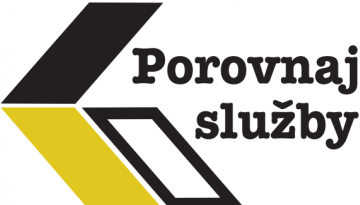Monitorujeme 1677 zdrojov

 Google Dooles 21.06.2022 16:30
Date: June 21, 2022
Today’s Doodle—illustrated by Anishinaabe guest artists and —celebrates Norval Morrisseau , an Indigenous Canadian artist from the Bingwi Neyaashi Anishinaabek First Nation. Morrisseau is widely considered the grandfather of contemporary Indigenous art in Canada, and his work paved the way for the emergence of Indigenous artwork in mainstream galleries. Today, on Canada’s National Indigenous Peoples Day, we honor Morrisseau and his paintings that beautifully captured the stories of Indigenous tradition.
Norval Morriseau—whose Ojibwa name was Copper Thunderbird—was born on the Sand Point a reserve in Ontario, Canada, on March 14, 1932. He was raised by his maternal grandparents, who helped instill his pride for Anishinaabe culture and traditions. At the age of six, Morriseau was forced to leave his home and attend residential school—a place where traditional Native ceremonies were banned and speaking traditional languages was forbidden. Despite the trauma and hardships he experienced in his youth, Morrisseau was fueled by his desire to preserve his people’s traditions. His grandfather, a Shaman trained within the Midewiwin spiritual tradition, had introduced Morrisseau to shamanism and passed down the stories and legends of the Ojibwa people.
As Morrisseau entered adulthood, he began exploring ways to incorporate Anishinabek oral traditions and imagery through his artwork. In 1962, he hosted an exhibit at the Pollock Gallery in Toronto, marking his official debut to the art world and the first time an Indigenous artist was featured in a major contemporary art gallery in Canada. His art style became known as Woodland painting, combining rich colors, birch-bark scroll etchings and, oftentimes, skeletal animals and people. Morrisseau’s work represented a unique intersection between traditional Indigenous imagery and modern art styles. His path to success has not been simple - Morrisseau’s artwork has unfortunately been the subject of ongoing art fraud and plagiarism cases, as many sought to capitalize on the value earned through his unique style.
Over his multi-decade career, Morrisseau’s artwork was featured in exhibits across Canada, Europe and the world. Some of his notable paintings include Moose Dream Legend , Conquest of the Thunderbird , Androgyny , and Observations of the Astral World . Morrisseau also leveraged his growing influence to advocate and support emerging First Nations artists, such as Daphne Odjig and Roy Thomas. He was an original member of the Indian Group of Seven—a group dedicated to uplifting the next generations of Indigenous artists. Morrisseau’s contributions led to his recognition as the grandfather of contemporary Indigenous art in North America.
Today, we can see Morrisseau’s legacy recognized on the global stage as a renowned artist, a revolutionary, and Indigenous icon. His ability to shatter societal, sexual, and commonly held stereotypes exemplifies the perseverance and power that countless Indigenous peoples experience. On National Indigenous Peoples Day, and everyday, we look to celebrate these achievements and recognize the contributions that Indigenous peoples have had and continue to have on Turtle Island.
Thank you, Morrisseau for sharing the stories of your Indigenous culture through art with the world!
Guest Artist Q&A with Blake Angeconeb and Danielle Morrison
Today’s Doodle was illustrated by Anishinaabe guest artists and . Below, they share their thoughts behind the making of this Doodle:
Q: When and how did your life story intersect with that of Norval Morrisseau?
Blake: I started painting in 2013. At the time, I was painting portraits of my favorite musicians and icons. I remember first truly discovering Norval’s work shortly after that. I was instantly drawn into his work and fell in love with it. I would spend my lunch breaks at the local library reading every book written about him. His art has greatly influenced my life as I paint in the Woodland style as well. I wouldn’t be who I am without Norval.
Danielle: Growing up, there was a large picture book of Norval’s paintings always on our bookshelf. I was raised in Kenora, Ontario, where I learned from stories that my father told that Norval spent periods of his life—which weren’t always happy. I came to understand Norval as one of the many Anishinaabeg around Lake of the Woods who lived troubled lives as a result of trauma from the Indian Residential School system. It amazed me that he overcame so much adversity to create such beauty in art. I also believed him to be a relative of mine, as our families shared the same last name—my grandfather was a Morrisseau before he attended Cecelia Jeffrey Residential School, where they changed it to Morrison. When I reached my senior year of high school, I decided to pursue Fine Arts in university. I spent those years studying much of Norval’s work. I felt close to him for much of my formative years as a young adult.
Q: Can you tell us more about the artistic vision and interpretation of this Doodle? In what ways does it pay homage to Norval Morrisseau and his roots?
Blake: This Doodle is done in the Woodlands school of art, which Norval was the master of. He brought this art form into the light. In the Doodle we have a thunderbird, snake, two birds, Norval’s portrait and another snake, all accompanied by traditional Anishinaabe florals throughout. The imagery is done with thick black lines and layered colors like Norval did.
Danielle: Norval was very much inspired by our Anishinaabe culture and the surroundings of Lake of the Woods. A similar color palette, references to natural life, and the spirit of ceremony are all present in this Doodle. I have always loved Norval’s florals and their organic feel. It made sense to encompass the doodle in Anishinaabe florals reminiscent of his style. It gives the artwork life.
Q: How do you think Norval shaped, contributed and influenced culture and the art world?
Danielle: As a scholar of Fine Arts, I can confidently say that Norval’s influence was far-reaching and made a great impact on the world of art. On the other hand, I didn’t necessarily learn of this from attending university, given that much of my education was Western-focused and rarely covered Indigenous artists. I learned this through life experience and witnessing the space he created for other Indigenous artists to succeed. So many Indigenous artists today, myself included, are inspired by Norval’s legacy and his tenacity to create something that the art world had never seen before. He teaches us to be proud of who we are as Anishinaabe people, to live beyond stereotypes, and to create without limitations.
Q: Can you explain how Norval earned the Copper Thunderbird nickname?
Blake: This is his Anishinaabe name. He received this name when he was very ill and it healed him.
Q: Why do you think he’s considered the Picasso of the North?
Danielle: Picasso broke tradition and revolutionized art. In a lot of ways, Norval did the same with art and Anishinaabe culture. He was highly criticized by our own community for sharing so much of what was considered ceremonial and only accessible by people who practiced those teachings. The subject matter of his art—whether it was cultural references or about sexuality—were considered very taboo. Even today, there are many who are not so accepting of the mixing of contemporary concepts or sacred teachings represented in the Woodlands school of art. It did not matter to Norval. He persevered with his ideas and creativity, and left an incredible imprint on the history of art.
Q: What is your fondest memory or experience with him?
Blake: Sadly, I never had the opportunity to meet him. However, I feel his spirit whenever I’m in the presence of his work and am grateful for that. I always enjoy hearing stories about him as well.
Q: What do you wish people would know about Norval Morrisseau and how can we honor his legacy?
Blake: I wish everyone would acknowledge the beauty he brought into this world. His art channeled our culture and stories, which were told with his drawings and paintings. His work has helped tell our stories and will continue to do so, as his art is always going to be here. He used his gift to better the world and shared it with everyone. I truly believe his art has a higher purpose and is meant to help everyone heal.
Danielle: It’s important for all to understand that Norval’s art was informed by Anishinaabe teachings of interconnectivity—we are all related, we are all energetic beings. Norval held the Anishinaabe worldview that is accepting of all sexualities, genders, races, and religions. People should know that Norval himself was bisexual. It is fitting that this Doodle is being launched during June, which is both Pride and National Indigenous History month in Canada. In a world where there is so much violence driven by hatred and divide, we could all stand to gain more peace and mutual understanding by practicing and living the spirit of Norval’s legacy and teachings.
Q: If people want to experience his art and learn more, where should they go?
Danielle: We encourage others to learn more about Norval Morrisseau through the
Q: What can we all do to better support indigenous artists here in Canada?
Danielle: Society needs to recognize Indigenous artists as individuals with their own unique artistic visions that are beyond the romanticized idea of what “Indigenous art” should be. Indigenous artists cannot be expected to represent all Indigenous people. To support Indigenous artists is to also support artistic concepts that are beyond the stereotypes and basic cultural motifs of eagle feathers and medicine wheels. Indigenous artists practice in all mediums — beadwork, carving, sewing, painting, song, and dance. Every medium is deserving of proper compensation. Indigenous artists have spent hours, years, decades, honing their craft — an act of cultural reclamation and revitalization in and of itself. The best way to support Indigenous artists is to buy Indigenous art. Lift Indigenous artists up by supporting their livelihood so they can inspire the next generation of Indigenous artists to carry on the legacy.
Location:
Tags:
,
,
,
,
,
Google Dooles 21.06.2022 16:30
Date: June 21, 2022
Today’s Doodle—illustrated by Anishinaabe guest artists and —celebrates Norval Morrisseau , an Indigenous Canadian artist from the Bingwi Neyaashi Anishinaabek First Nation. Morrisseau is widely considered the grandfather of contemporary Indigenous art in Canada, and his work paved the way for the emergence of Indigenous artwork in mainstream galleries. Today, on Canada’s National Indigenous Peoples Day, we honor Morrisseau and his paintings that beautifully captured the stories of Indigenous tradition.
Norval Morriseau—whose Ojibwa name was Copper Thunderbird—was born on the Sand Point a reserve in Ontario, Canada, on March 14, 1932. He was raised by his maternal grandparents, who helped instill his pride for Anishinaabe culture and traditions. At the age of six, Morriseau was forced to leave his home and attend residential school—a place where traditional Native ceremonies were banned and speaking traditional languages was forbidden. Despite the trauma and hardships he experienced in his youth, Morrisseau was fueled by his desire to preserve his people’s traditions. His grandfather, a Shaman trained within the Midewiwin spiritual tradition, had introduced Morrisseau to shamanism and passed down the stories and legends of the Ojibwa people.
As Morrisseau entered adulthood, he began exploring ways to incorporate Anishinabek oral traditions and imagery through his artwork. In 1962, he hosted an exhibit at the Pollock Gallery in Toronto, marking his official debut to the art world and the first time an Indigenous artist was featured in a major contemporary art gallery in Canada. His art style became known as Woodland painting, combining rich colors, birch-bark scroll etchings and, oftentimes, skeletal animals and people. Morrisseau’s work represented a unique intersection between traditional Indigenous imagery and modern art styles. His path to success has not been simple - Morrisseau’s artwork has unfortunately been the subject of ongoing art fraud and plagiarism cases, as many sought to capitalize on the value earned through his unique style.
Over his multi-decade career, Morrisseau’s artwork was featured in exhibits across Canada, Europe and the world. Some of his notable paintings include Moose Dream Legend , Conquest of the Thunderbird , Androgyny , and Observations of the Astral World . Morrisseau also leveraged his growing influence to advocate and support emerging First Nations artists, such as Daphne Odjig and Roy Thomas. He was an original member of the Indian Group of Seven—a group dedicated to uplifting the next generations of Indigenous artists. Morrisseau’s contributions led to his recognition as the grandfather of contemporary Indigenous art in North America.
Today, we can see Morrisseau’s legacy recognized on the global stage as a renowned artist, a revolutionary, and Indigenous icon. His ability to shatter societal, sexual, and commonly held stereotypes exemplifies the perseverance and power that countless Indigenous peoples experience. On National Indigenous Peoples Day, and everyday, we look to celebrate these achievements and recognize the contributions that Indigenous peoples have had and continue to have on Turtle Island.
Thank you, Morrisseau for sharing the stories of your Indigenous culture through art with the world!
Guest Artist Q&A with Blake Angeconeb and Danielle Morrison
Today’s Doodle was illustrated by Anishinaabe guest artists and . Below, they share their thoughts behind the making of this Doodle:
Q: When and how did your life story intersect with that of Norval Morrisseau?
Blake: I started painting in 2013. At the time, I was painting portraits of my favorite musicians and icons. I remember first truly discovering Norval’s work shortly after that. I was instantly drawn into his work and fell in love with it. I would spend my lunch breaks at the local library reading every book written about him. His art has greatly influenced my life as I paint in the Woodland style as well. I wouldn’t be who I am without Norval.
Danielle: Growing up, there was a large picture book of Norval’s paintings always on our bookshelf. I was raised in Kenora, Ontario, where I learned from stories that my father told that Norval spent periods of his life—which weren’t always happy. I came to understand Norval as one of the many Anishinaabeg around Lake of the Woods who lived troubled lives as a result of trauma from the Indian Residential School system. It amazed me that he overcame so much adversity to create such beauty in art. I also believed him to be a relative of mine, as our families shared the same last name—my grandfather was a Morrisseau before he attended Cecelia Jeffrey Residential School, where they changed it to Morrison. When I reached my senior year of high school, I decided to pursue Fine Arts in university. I spent those years studying much of Norval’s work. I felt close to him for much of my formative years as a young adult.
Q: Can you tell us more about the artistic vision and interpretation of this Doodle? In what ways does it pay homage to Norval Morrisseau and his roots?
Blake: This Doodle is done in the Woodlands school of art, which Norval was the master of. He brought this art form into the light. In the Doodle we have a thunderbird, snake, two birds, Norval’s portrait and another snake, all accompanied by traditional Anishinaabe florals throughout. The imagery is done with thick black lines and layered colors like Norval did.
Danielle: Norval was very much inspired by our Anishinaabe culture and the surroundings of Lake of the Woods. A similar color palette, references to natural life, and the spirit of ceremony are all present in this Doodle. I have always loved Norval’s florals and their organic feel. It made sense to encompass the doodle in Anishinaabe florals reminiscent of his style. It gives the artwork life.
Q: How do you think Norval shaped, contributed and influenced culture and the art world?
Danielle: As a scholar of Fine Arts, I can confidently say that Norval’s influence was far-reaching and made a great impact on the world of art. On the other hand, I didn’t necessarily learn of this from attending university, given that much of my education was Western-focused and rarely covered Indigenous artists. I learned this through life experience and witnessing the space he created for other Indigenous artists to succeed. So many Indigenous artists today, myself included, are inspired by Norval’s legacy and his tenacity to create something that the art world had never seen before. He teaches us to be proud of who we are as Anishinaabe people, to live beyond stereotypes, and to create without limitations.
Q: Can you explain how Norval earned the Copper Thunderbird nickname?
Blake: This is his Anishinaabe name. He received this name when he was very ill and it healed him.
Q: Why do you think he’s considered the Picasso of the North?
Danielle: Picasso broke tradition and revolutionized art. In a lot of ways, Norval did the same with art and Anishinaabe culture. He was highly criticized by our own community for sharing so much of what was considered ceremonial and only accessible by people who practiced those teachings. The subject matter of his art—whether it was cultural references or about sexuality—were considered very taboo. Even today, there are many who are not so accepting of the mixing of contemporary concepts or sacred teachings represented in the Woodlands school of art. It did not matter to Norval. He persevered with his ideas and creativity, and left an incredible imprint on the history of art.
Q: What is your fondest memory or experience with him?
Blake: Sadly, I never had the opportunity to meet him. However, I feel his spirit whenever I’m in the presence of his work and am grateful for that. I always enjoy hearing stories about him as well.
Q: What do you wish people would know about Norval Morrisseau and how can we honor his legacy?
Blake: I wish everyone would acknowledge the beauty he brought into this world. His art channeled our culture and stories, which were told with his drawings and paintings. His work has helped tell our stories and will continue to do so, as his art is always going to be here. He used his gift to better the world and shared it with everyone. I truly believe his art has a higher purpose and is meant to help everyone heal.
Danielle: It’s important for all to understand that Norval’s art was informed by Anishinaabe teachings of interconnectivity—we are all related, we are all energetic beings. Norval held the Anishinaabe worldview that is accepting of all sexualities, genders, races, and religions. People should know that Norval himself was bisexual. It is fitting that this Doodle is being launched during June, which is both Pride and National Indigenous History month in Canada. In a world where there is so much violence driven by hatred and divide, we could all stand to gain more peace and mutual understanding by practicing and living the spirit of Norval’s legacy and teachings.
Q: If people want to experience his art and learn more, where should they go?
Danielle: We encourage others to learn more about Norval Morrisseau through the
Q: What can we all do to better support indigenous artists here in Canada?
Danielle: Society needs to recognize Indigenous artists as individuals with their own unique artistic visions that are beyond the romanticized idea of what “Indigenous art” should be. Indigenous artists cannot be expected to represent all Indigenous people. To support Indigenous artists is to also support artistic concepts that are beyond the stereotypes and basic cultural motifs of eagle feathers and medicine wheels. Indigenous artists practice in all mediums — beadwork, carving, sewing, painting, song, and dance. Every medium is deserving of proper compensation. Indigenous artists have spent hours, years, decades, honing their craft — an act of cultural reclamation and revitalization in and of itself. The best way to support Indigenous artists is to buy Indigenous art. Lift Indigenous artists up by supporting their livelihood so they can inspire the next generation of Indigenous artists to carry on the legacy.
Location:
Tags:
,
,
,
,
,
NEWS.SK odporúča
Top firmy
Nie sú nájdené žiadne články.
Nie sú nájdené žiadne články.



















